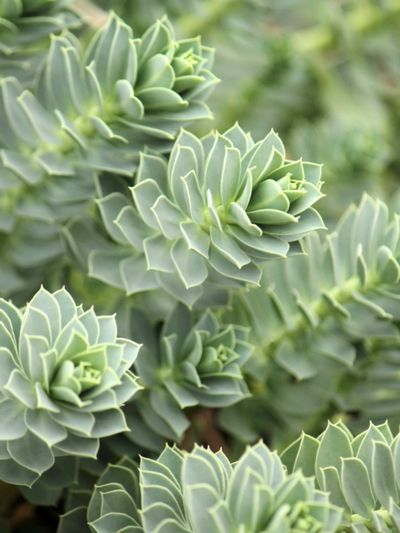About Euphorbia Plants
Euphorbias occur naturally in many parts of the world, but most notably Africa, Asia, Europe, and North and South America. The variation of form and size provide a spectacle of plant life. Some are as large as trees and others range as small groundcovers. There are over 2,000 species, many of which you will find familiar from interior commercial plantings. Crown of thorns is recognizable by its spiky stems, and donkey spurge is aptly named with thick rope-like stems sprawling away from the plant. Poinsettias are a form of Euphorbia that is recognizable to almost everyone. Most varieties of Euphorbia plants produce weird and unusual flowers. Gardeners should be cautious when handling Spurge, as all varieties have a milky latex sap that can be irritating or even poisonous.
How to Cultivate a Euphorbia Plant
As a general rule, Spurge requires well-drained soil in full sun. A few tolerate shadier conditions, but none of the family is fussy about soil condition. They even thrive in very poor soils and can tolerate periods of drought. Euphorbia plant care is simple. Provide them light, moderate moisture, and watch for annoying pests like whitefly. Provide water under the plant’s leaves to prevent powdery mildew. You will not need to fertilize Spurge often. Wait until the bottom leaves become yellow before feeding with a water-soluble plant food. Prune when the plant gets out of hand. These plants are almost impossible to kill and are a perfect choice for the novice gardener. Growing Euphorbia to share with a friend is also a great beginner propagation project.
Additional Growing Tips for Euphorbia
Spurge grows quite well from seeds sown indoors in pots. You can propagate Euphorbia more quickly and easily by gathering up the “volunteers” around an established plant. You may also root stem cuttings in a soilless medium, such as peat. Keep them lightly misted and enclose the pot in a bag to keep moisture in. Let the pot breathe once a day for an hour, so the soil does not mold. Once the cutting has rooted, you can pot it in regular soil or plant outdoors in moderate climates. One of the more important growing tips for Euphorbia is to let the stem cutting dry for a few days before planting. This allows the sap to form a callus on the cut end and prevents rotting. Whether you want a giant thornless cactus specimen 6 feet (2 m.) tall or a creeping, sweetly flowering groundcover, you should try growing Euphorbias. They reward the gardener with more than just good looks, but remind us all of the variety and beauty found in nature.
